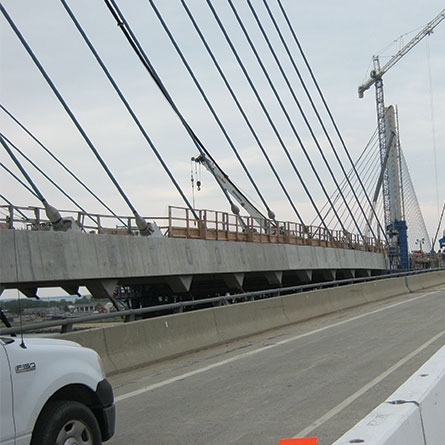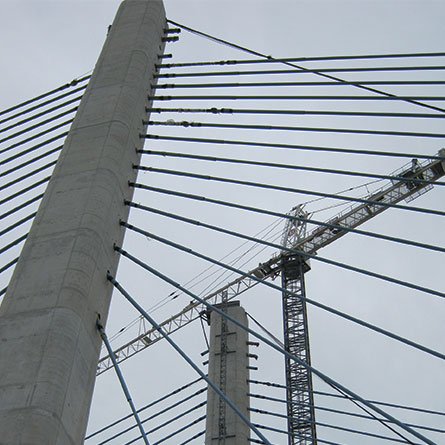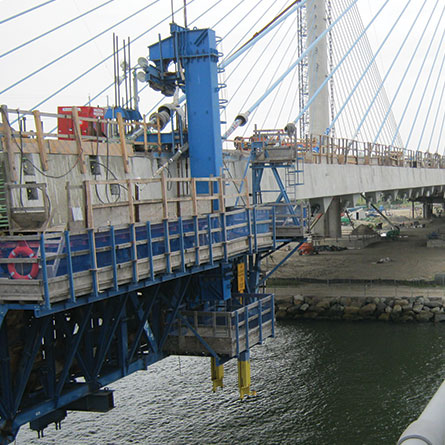Indian River Inlet Bridge Approach. Sussex County, Delaware.
WRA developed contract documents to safely remove the embankment and then replace it with lightweight foamed concrete fill to eliminate any future long-term settlement concerns. WRA also developed contract plans for the approach roadway as well provisions to maintain vehicular, pedestrian, and bicycle traffic during the various stages of construction. The project also included a peer-review of the multi-million dollar removal of the existing adjacent SR 1 bridge over the inlet and an emergency design of a tieback soldier pile wall to provide storm erosion protection along SR 1.



Services Performed
Project Highlights
Geotechnical
The final design included the innovative use of lightweight foamed concrete fill to balance the existing embankment loads on deep deposits of soft soils to reduce long term settlement and minimize/eliminate lateral earth pressure on the abutments for the structure on SR 1 over the Indian River Inlet.
Bridges
WRA designed approach slabs leading up to the new bridge and a new timber pedestrian bridge meeting ADA requirements. WRA provided detailed reviews of the contractor’s proposed plan to demolish the existing SR 1 bridge over the inlet.
Highways/Roadways
WRA’s Highway Engineers designed the roadway geometry for the 4-lane SR 1 approaches to the new Indian River Inlet Bridge including acceleration and deceleration lanes as well as the 2-lane Access Roads A and B. Additional roadside upgrades including guardrail installation were designed for Access Road C.
Landscape Architecture
Landscaping involved stabilizing the embankments and sand dune adjacent to SR 1 due to the sandy soil and potential for beach erosion given the historical flooding in this area. Native plant species were chosen to ensure the plantings would endure the site’s harsh environmental conditions.
Mapping/GIS/Surveying
Surveying efforts for this project consisted of topographic surveys and soil boring locations. Topographic surveys were conducted along both the north and south bound approaches to the bridge. Six soil borings were staked for geotechnical investigations.
Traffic
WRA developed a Transportation Management Plan, and design of signing, striping and conduit plans; lighting plans; and multi-phased maintenance of traffic plans. Temporary median crossovers allowed two-lane, two-way traffic on one side of the divided roadway and allowed phased construction. Pedestrian detours were maintained to allow park access.
